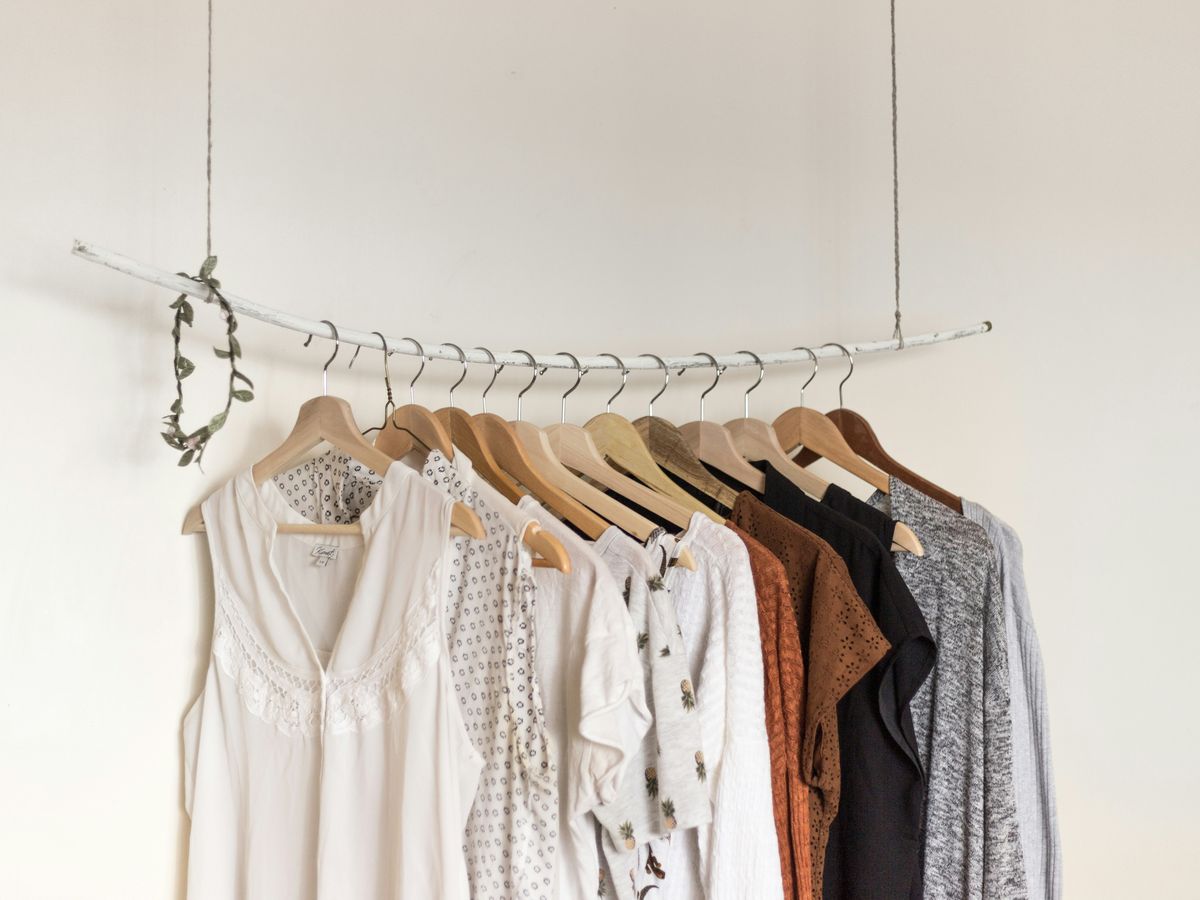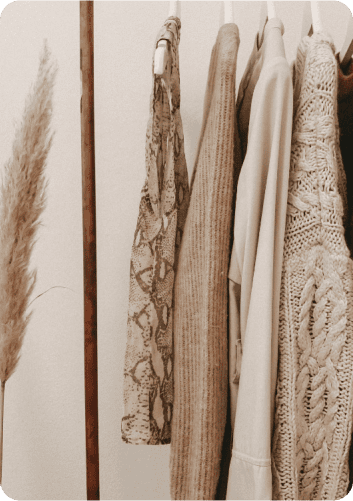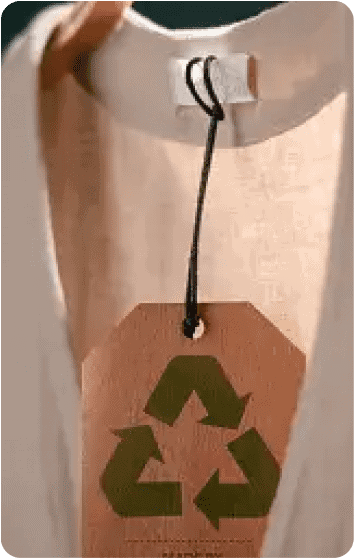In an era where the call for sustainability grows louder by the day, fashion takes center stage, not just for the trends it sets but for the environmental footprint it leaves behind.
Among the heroes of this eco-revolution is rayon fabric, a material that stands out not only for its luxurious feel but also for its green credentials.
This article covers the fascinating world of rayon fabric, its origins, growth in popularity, and highlights why this sustainable fabric is an essential part of an eco-conscious wardrobe.

What is Rayon and Where Does it Come From?
Rayon is a semi-synthetic fiber that’s been in usage since the 19th century. Originally developed as an affordable alternative to silk, rayon now has a unique place and purpose in the world of eco-friendly fashion.
As you might be aware, silk has the worst environmental impact among all non-synthetic fabrics. It takes about 850-1,000 tons of water to manufacture 1 ton of raw silk.
Not to forget is the degrading condition of human labor that is involved in the production of this valuable fabric.
And lastly, silk production takes a lot of energy. Silk farms have to be kept at controlled temperatures, and harvesting the cocoons uses both hot water and hot air.
Surely, there’s a better way to enjoy most of the attributes of silk without wrecking havoc on the environment.
Enter: Rayon.
Why Rayon Fabric?
Rayon fabric’s appeal lies in its unique blend of properties. It’s breathable, highly absorbent, and has a silk-like texture, making it a favorite among fashion designers. But its real value comes from its eco-friendly production and upkeep process. Unlike conventional fabrics like cotton and nylon, which require extensive water, pesticides, and energy to produce, rayon is manufactured in a rather sustainable way.

The Production Process of Rayon Fabric
Rayon is produced from cellulose fibers that are derived from wood pulp. The production process is less water-intensive and more sustainable than that of cotton or silk.
It is also biodegradable, which means it poses less of an environmental threat at the end of its life cycle, and doesn’t end up in a landfill like the rest of the synthetic fibers.
Rayon fabric offers the desired blend of style, versatility, functionality, and sustainability for eco-conscious shoppers. For those looking to make eco-friendly fashion choices, identifying and purchasing high-quality rayon garments is key.

How to Care for Rayon Fabric Garments?
Plenty of everyday care and maintenance goes into prolonging the shelf life of rayon. Rayon is a versatile material, but it can be delicate, especially when wet. Care instructions may vary based on the type of rayon and the fabric construction, so it’s always best to check the garment’s care label.
Here are some general tips for caring for rayon items:
Washing
Read the care label on your rayon garment. Some rayon clothes are washable, while others might require dry cleaning.
For hand washing, soak the fabric in cold water with a mild detergent and gently swirl the garment through the water without twisting or wringing it.
For machine washing, use the gentle cycle with cold water and a mild detergent. To protect the garment, consider using a mesh laundry bag.
Drying
To air dry your garment, lay it flat on a clean, dry towel away from direct heat and sunlight. Avoid hanging rayon garments on hangers to dry, as they may stretch or lose their shape.
Remember to avoid the dryer! Rayon can shrink and become misshapen in the dryer. If you must use a dryer, use the lowest heat setting and remove the garment while it is still slightly damp.

Ironing
Rayon can wrinkle easily, but it also can be damaged by high heat. If ironing is necessary, turn the garment inside out and use a low heat setting. Place a pressing cloth between the iron and the fabric to prevent scorching. Some rayon garments are better steamed than ironed.
Storage
Store rayon garments in a cool, dry place. Fold them gently instead of hanging to avoid stretching and distortion. Use padded hangers if you must hang them.
Stain Removal
Treat stains immediately by gently blotting with a clean, damp cloth. Avoid rubbing the fabric harshly. For tough stains, consult a professional cleaner, especially if the garment is labeled dry-clean only.
Dry Cleaning
Some rayon items, particularly those that are structured or blended with other fibers, may require dry cleaning. This is often the safest choice to maintain the shape, color, and texture of the fabric.

Beyond Rayon: A Look at Other Sustainable Fabrics
While Rayon is a significant player in sustainable fashion, it’s part of a broader fabric family that includes organic linen, hemp, and Tencel.
Each of these materials offers unique benefits and further reduces the fashion industry’s environmental footprint, encouraging a wider adoption of sustainable fabrics.

Is Rayon the Future of Forward Fashion?
Rayon fabric represents a blend of luxury, versatility, and sustainability. Its role in eco-friendly fashion is undeniable, offering a glimpse into a future where fashion and environmental responsibility go hand in hand. As we look towards a more sustainable world, embracing materials like Rayon is not just a trend but a necessity.
Ready to make a sustainable shift in your fashion choices? Explore rayon fabric and other sustainable materials, and join us in creating a greener, more responsible fashion industry. Subscribe to our newsletter for more insightful eco-tips, and share your journey towards a sustainable wardrobe with us. Together, we can make a difference.
FAQs
Is rayon a good quality fabric?
Rayon is considered to be a good quality fabric, especially when it comes to its softness, drapability, and absorbency. It mimics the feel of natural fibers like silk, wool, and cotton, making it a favorite for a wide range of clothing. However, its quality can vary depending on the manufacturing process and the type of rayon produced.
Is rayon fabric better than cotton?
Whether rayon fabric is better than cotton depends on the criteria being considered. Cotton is known for its durability, comfort, and breathability, making it an excellent choice for everyday wear and for summer clothing. Rayon, while also breathable and soft, may not be as durable as cotton but offers a silkier feel and a more flattering drape. For cooler, more humid climates, rayon can feel more comfortable due to its ability to wick moisture away from the body.
Is rayon fabric good for summer?
Yes, rayon fabric is good for summer as it’s lightweight and has excellent moisture-absorbing properties, making it breathable and comfortable to wear in hot weather. However, it’s not as moisture-wicking as cotton, so for extremely hot or dry climates, cotton might be more comfortable.
Is rayon fabric 100% cotton?
No, rayon is not cotton. While both are cellulosic, rayon fabric is a man-made fiber produced from the cellulose of wood pulp or cotton linters, and it undergoes a chemical process during production. Cotton is a natural fiber harvested from the cotton plant.
Is rayon good for your skin?
Rayon is generally safe and comfortable for most people to wear. However, because it’s manufactured using chemical processes, individuals with sensitive skin or allergies to certain chemicals might prefer organic cotton or other natural fibers. It’s also worth noting that rayon’s absorbency can make it a fabric that doesn’t irritate the skin by keeping moisture away.
Is rayon more expensive than cotton?
The cost of rayon compared to cotton can vary depending on several factors, including the quality of the fabric, the manufacturing process, and market conditions. Generally, rayon is considered to be cost-effective, but high-quality rayon or certain types of specialty rayon can be more expensive. Overall, cotton tends to have a higher price point, particularly organic cotton, due to its natural origins and the more labor-intensive process of cultivation and harvest.
Is rayon sustainable?
The sustainability of rayon is complex. On one hand, it is derived from renewable plant materials and is biodegradable. However, the production process of conventional rayon involves chemicals that can be harmful to the environment if not properly managed. There are more sustainable versions of rayon, such as lyocell (often known by the brand name Tencel), which uses a closed-loop process that recycles almost all chemicals and water used in production. Sustainability also depends on factors like forestry practices and the overall environmental management of the manufacturing process.
Rayon offers a blend of qualities that make it a popular choice for a variety of uses, from everyday clothing to high fashion. Its comparison with cotton depends largely on personal preference and the specific requirements for the fabric’s end use.









